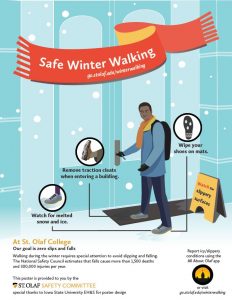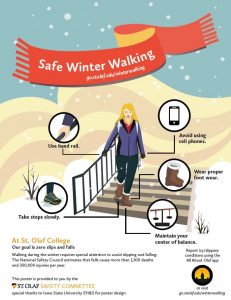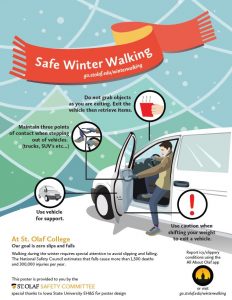REPORT AN ICY/SLIPPERY CONDITION
The Facilities Department remains vigilant and works hard to maintain clear roads and walkways, but there simply will be times when you encounter snowy/icy conditions (for example, melted ice may refreeze over night and cause sporadic locations of slippery walkways). Staying alert, wearing proper winter footwear, and moving carefully will greatly reduce your chances of slipping or falling during the winter season.
Download a poster.
- Wear shoes or boots that provide traction and are designed to grip snow or ice.
- Hard, smooth-soled shoes are not designed for walking on such slippery surfaces.
- You can change into your office shoes once you are inside your building.
- Wear flat-soled footwear for better stability; avoid footwear with higher heels.
- If you do not have footwear with proper slip-resistant soles, then invest in a removable pair of traction devices that provide special gripping for walking on snow and ice, such as Yaktrax. [Remember to remove when entering buildings.]



You must be logged in to post a comment.